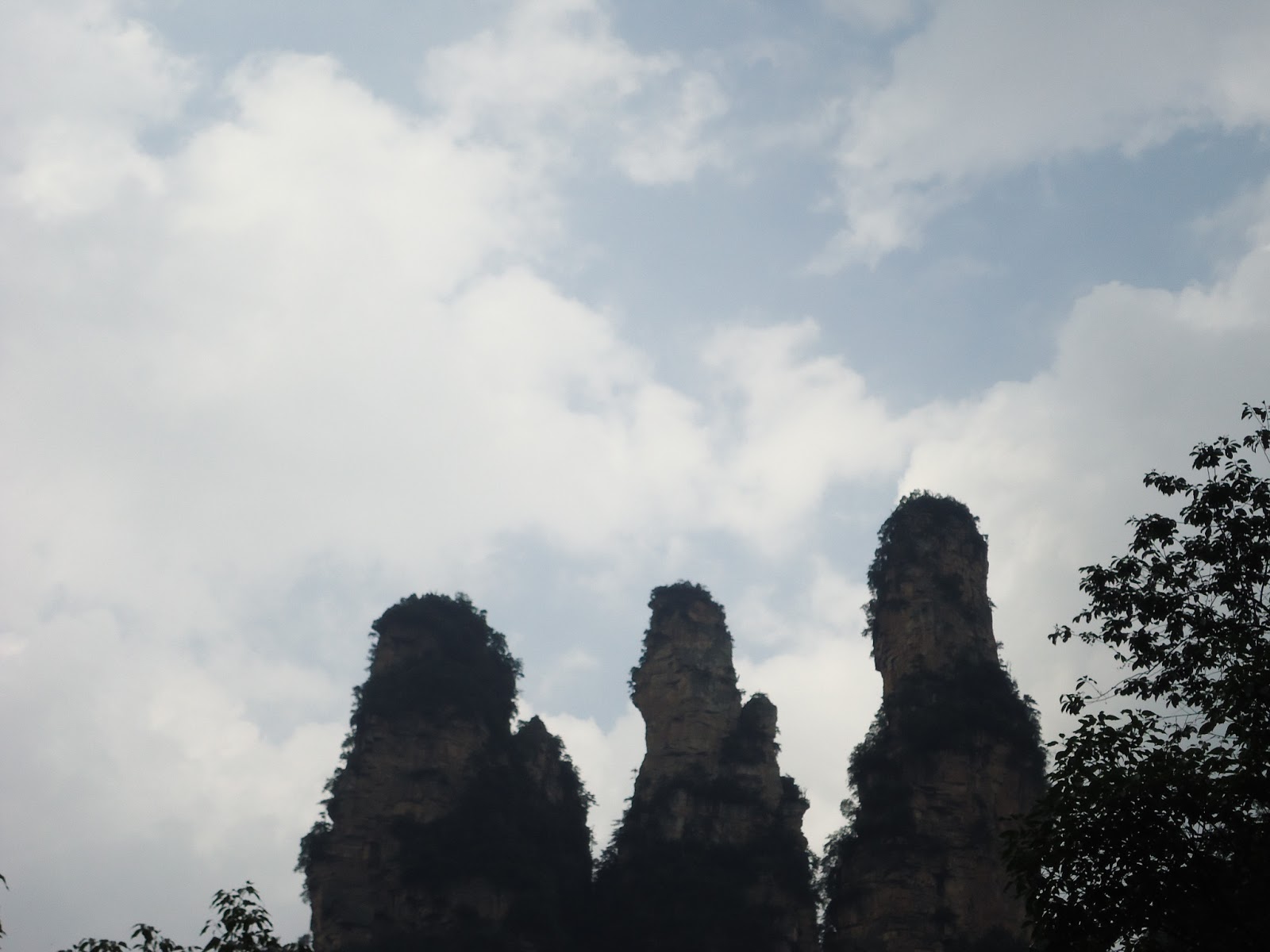
Well, we are back from 11 days in China with grandson Kyle.
It was a great time and we'll be blogging some of the details over the next few days (to make up for not being online in China while we were gone). For now, though, here are some highlights:
The Good: Lots of China was very good -- both in expected ways and in surprising ways. We enjoyed the trip probably more than we expected to:
--Sometimes long-anticipated sights disappoint. Not in China. The Great Wall is really, really GREAT. And the Terra Cotta warriors and Forbidden City both lived up to expectations.
--We had a wonderful, pleasant surprise in Zhangjiajie, the mountain area in SW China where the background for the movie
Avatar comes from. It was a delightful place with almost no foreigners, but lots of internal tourists from China.
-- One unexpected pleasure (or problem, depending on your perspective) of going to Zhangjiajie (and also Xian, where the Terra Cotta warriors were) is that we were so far off the beaten path for Westerners, that =we= actually became an attraction. People wanted our photos (especially of Kyle) and one guy even came up and started running his hands through Kyle's hair.

--The food was either very bad (like bad US Chinese food) or, for the most part, very very good. We had lots of interesting new things (smoked pork in Zhangjiejie and seaweed soup) as well as some of the best of familiar things (if you go to Xian get the steamed dumplings at DeFaChang!).

--We loved the parks -- especially the Heavenly Palace park in Beijing, where the mornings would find all sorts of people enjoying themselves with early morning exercise.
--The Bund at night in Shanghai is a must!
The Bad -- Not all of China was top quality. Some lowlights:
-- The weather (especially in Shanghai) was pretty bad (up to 100)!
-- The pollution (especially in Beijing) was also pretty oppressive.
-- Public toilets -- yuck!
-- Traffic. China is teeming with people and that means that it is teeming with cars too. On one trip in Shanghai it was so bad that our car overheated and we had to get out of the care and head for the Shanghai Metro, which was, thankfully, quite easy to navigate.
-- Chinese exceptionalism. It isn't all bad, but apparently, from the Chinese perspective the best, biggest, fastest and smartest everything is in China. It's a pretty insular place.
 The Ugly
The Ugly -- For the most part, we did not see the ugly side of China. Indeed we saw alot less of it than we had expected too. But when one person told us of how his family had lost their farm without compensation, we saw the fist inside the iron glove.
Indeed, one image will stay with us for a long time. We were at Tienamin Square by the Forbidden City. Kyle noticed alot of fire extinguishers around and asked me what they were for (you can see two in this picture of us). I didn't know so I asked the guide. He said "crazy monks." Apparently the repression is so prominent in Tibet that the government must take steps to stop the self-immolation of protesters, to include having fire extinguishers stand like sentinels on the plaza.
 We went the other day to Trummers on Main St. in "historic Clifton, Virginia." What a fun place! Set in an old Colonial house, the interior is crisp, clean and with a large skylight wonderfully airy. And the food matches the decor. If we had to describe it the key word might be "playful."
We went the other day to Trummers on Main St. in "historic Clifton, Virginia." What a fun place! Set in an old Colonial house, the interior is crisp, clean and with a large skylight wonderfully airy. And the food matches the decor. If we had to describe it the key word might be "playful."

















